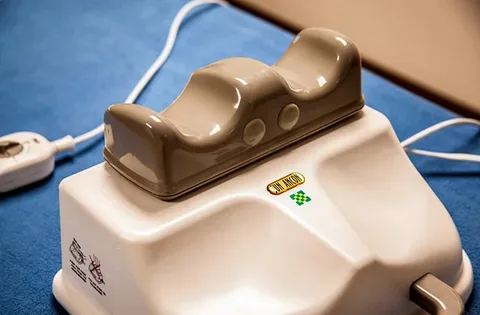Enhancing the contours of the cheeks is a popular aesthetic goal for those seeking a youthful, balanced facial profile. Cheek enhancement has grown in popularity across the globe, including among those exploring Cheek Augmentation in Dubai, where facial harmony is considered an essential part of beauty.When considering this cosmetic enhancement, a crucial decision lies between two primary options: dermal fillers or cheek implants. Each method serves a similar goal but with significantly different techniques, longevity, and results. Choosing the right option depends on individual facial anatomy, desired outcomes, and lifestyle preferences.
Understanding Cheek Augmentation
Cheek augmentation is a cosmetic procedure that enhances the volume and contour of the midface. It restores youthful plumpness and structure or accentuates naturally flat or hollow cheeks.
Why People Choose Cheek Augmentation
-
To correct age-related volume loss
-
To define the cheekbones
-
To improve facial symmetry
-
To achieve a youthful, lifted look
Two widely used approaches for cheek augmentation are fillers and implants, each offering distinct advantages and considerations.
Dermal Fillers for Cheek Augmentation
Dermal fillers are injectable substances used to add volume, reshape contours, and rejuvenate the midface. Hyaluronic acid-based fillers are the most common, though other materials like calcium hydroxylapatite and poly-L-lactic acid are also used.
How Dermal Fillers Work
Dermal fillers are injected directly into the soft tissue of the cheeks. The practitioner uses strategic placement techniques to sculpt, lift, and volumize the cheek area. Results are typically visible immediately after treatment.
Advantages of Fillers
-
Minimally invasive with little to no downtime
-
Customizable during the procedure for symmetrical results
-
Reversible, especially with hyaluronic acid fillers
-
Quick results, often visible right after treatment
Disadvantages of Fillers
-
Temporary—lasting between 6 months to 2 years, depending on the type
-
Maintenance is required to sustain volume over time
-
Subtle lifting compared to structural implants
Cheek Implants for Augmentation
Cheek implants are solid medical-grade materials (usually silicone) surgically placed beneath the skin to provide permanent volume and structure to the cheekbones.
How Cheek Implants Work
This surgical procedure involves making a small incision—often inside the mouth or near the lower eyelid—and inserting the implant over the cheekbone. The implant is fixed in place, and the incision is then closed.
Advantages of Implants
-
Permanent results that don’t require repeated visits
-
Greater definition and projection for those with flat or sunken cheeks
-
One-time procedure, no ongoing maintenance
Disadvantages of Implants
-
Invasive and requires general or local anesthesia
-
Recovery time, with swelling and bruising lasting for days or weeks
-
Risk of complications such as infection or implant shifting
Comparing Fillers vs Implants
The choice between fillers and implants depends largely on desired longevity, invasiveness, and the extent of enhancement required.
Comparative Table: Fillers vs Implants
| Feature | Dermal Fillers | Cheek Implants |
|---|---|---|
| Procedure Type | Non-surgical, injectable | Surgical (requires incisions) |
| Recovery Time | Minimal (24–48 hours) | Longer (1–2 weeks) |
| Longevity | 6 months to 2 years | Permanent |
| Customization | Easily adjustable during treatment | Requires implant sizing before surgery |
| Reversibility | Reversible (if hyaluronic acid-based) | Not reversible without surgical removal |
| Downtime | Minimal | Moderate |
| Ideal For | Mild to moderate volume loss | Significant volume enhancement |
| Results Onset | Immediate | After swelling subsides |
Treatment Process for Cheek Fillers
Step-by-Step Breakdown
-
Consultation
A comprehensive evaluation of facial structure and discussion of goals. -
Pre-treatment Preparation
Cleansing of the skin and, in some cases, application of a topical anesthetic. -
Injection Process
Filler is injected into targeted cheek areas using fine needles or cannulas. -
Sculpting and Massage
The filler is massaged and shaped to ensure even distribution and symmetry. -
Post-Treatment Care
Patients are advised to avoid strenuous activities and extreme facial movements for 24 hours.
Recovery
Most people can return to daily activities immediately. Mild swelling or bruising may occur but resolves within a few days.
Longevity of Results
Fillers
The effects are temporary, lasting anywhere from six months to two years. Maintenance sessions are required to preserve the aesthetic.
Implants
Once inserted and healed, cheek implants are permanent. They do not shift easily and provide consistent definition over time.
Who is a Good Candidate?
Fillers May Be Better If:
-
You are new to cosmetic procedures.
-
You want subtle, temporary enhancement.
-
You prefer a non-surgical approach.
-
You want to try enhancement before committing to implants.
Implants May Be Better If:
-
You seek a more dramatic, permanent change.
-
You are willing to undergo surgery.
-
You have significant facial volume loss.
-
You want to avoid repeat maintenance.
Pros and Cons Summary Table
| Factor | Fillers | Implants |
|---|---|---|
| Customization | High | Moderate |
| Pain Level | Mild (topical anesthetic) | Moderate (surgical pain) |
| Swelling Duration | Few days | 1–2 weeks |
| Risk of Complications | Low | Moderate |
| Natural Look | Very natural | Structured and defined |
What is the most natural-looking option for cheek augmentation?
Fillers generally offer a more natural look as they blend with existing facial tissue and can be sculpted in real time.
Can fillers be reversed if I don’t like the results?
Yes, hyaluronic acid-based fillers can be dissolved with an enzyme called hyaluronidase.
Do cheek implants feel artificial under the skin?
High-quality implants are designed to mimic natural bone structure and generally feel firm and natural once healing is complete.
How long does it take to recover from cheek implant surgery?
Most people need about 1–2 weeks for the initial healing, although residual swelling may last a few more weeks.
Are there any non-invasive alternatives to fillers or implants?
Facial fat grafting is an option, where fat is harvested from another part of your body and injected into the cheeks, offering a natural and semi-permanent result.
How soon will I see results with fillers?
Fillers provide instant results, though final outcomes become more apparent after any swelling subsides.
Conclusion
Choosing between fillers and implants for cheek augmentation depends on personal goals, lifestyle, and desired permanence. Fillers offer a flexible, low-downtime option ideal for subtle and adjustable enhancement, while implants provide lasting structure and definition for those seeking a more dramatic transformation.Both methods have distinct advantages, and the best results often come from a clear understanding of what each can realistically achieve. Whether opting for a temporary touch-up or a permanent enhancement, cheek augmentation can beautifully elevate facial balance and self-confidence when aligned with personal expectations and aesthetic goals.











































